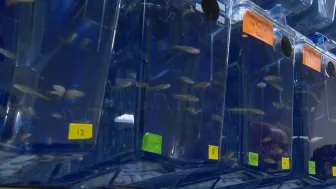The University of Manitoba’s Rady Biomedical Fish Facility, a state-of-the-art $2.5-million lab, is making waves in the field of regenerative medicine. Housing around 2,500 tropical fish, including Mexican tetras and zebrafish, the facility is at the forefront of research exploring how these aquatic species regenerate damaged tissues and organs—a discovery that could one day lead to groundbreaking therapies for human diseases.
Zebrafish, in particular, have become “leaders” in regenerative medicine, thanks to their remarkable ability to regrow damaged organs, such as the brain, heart, skin, and limbs. According to Benjamin Lindsey, an assistant professor in human anatomy and cell science at the University of Manitoba, this regenerative capability has fascinated researchers for years.
“In the last 15 to 20 years, scientists have realized that when you injure different parts of the zebrafish’s body—the brain, heart, skin, and even limbs—they all regenerate,” Lindsey explained. “We’re beginning to understand that there may be common regenerative mechanisms or an overarching regenerative program in the zebrafish’s spinal cord, brain, and possibly other organs. This discovery could be the key to unlocking new therapeutic strategies for humans in the future.”
The research at the facility focuses on studying these regenerative processes at the cellular level. As part of the experiments, Lindsey uses a technique that involves adding fluorescent “tags” to certain cells in the fish. These tags allow researchers to track and observe the behavior of cells as they participate in the repair and regeneration process.
The insights gleaned from this research have the potential to revolutionize the field of regenerative medicine. By understanding the cellular and molecular mechanisms behind the fish’s ability to regenerate, scientists hope to develop strategies that could stimulate similar processes in humans, offering hope for those suffering from conditions such as spinal cord injuries, heart disease, and limb loss.
With its innovative research and cutting-edge technology, the Rady Biomedical Fish Facility is positioning the University of Manitoba as a leader in regenerative medicine, paving the way for future discoveries that could have a profound impact on human health.



0 Comments